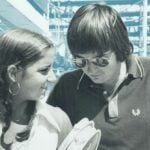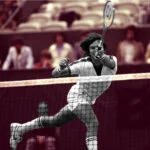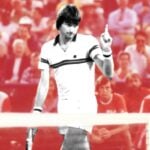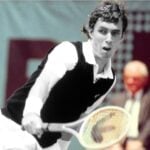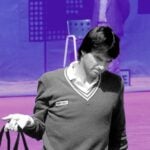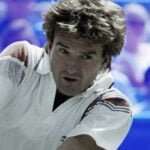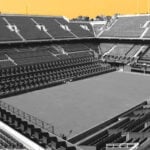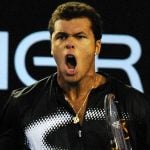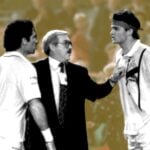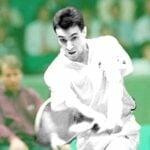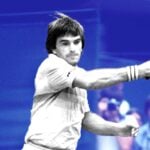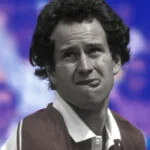May 28, 1980: The day Connors came back from two sets to love down against a Frenchman and won over the Paris crowd
Every day, Tennis Majors takes you back in time to relive a tennis event which happened on this specific day. On May 28, 1980, Jimmy Connors won over the Parisian fans after coming from two sets to love and match point down to defeat French player Jean-Francois Caujolle
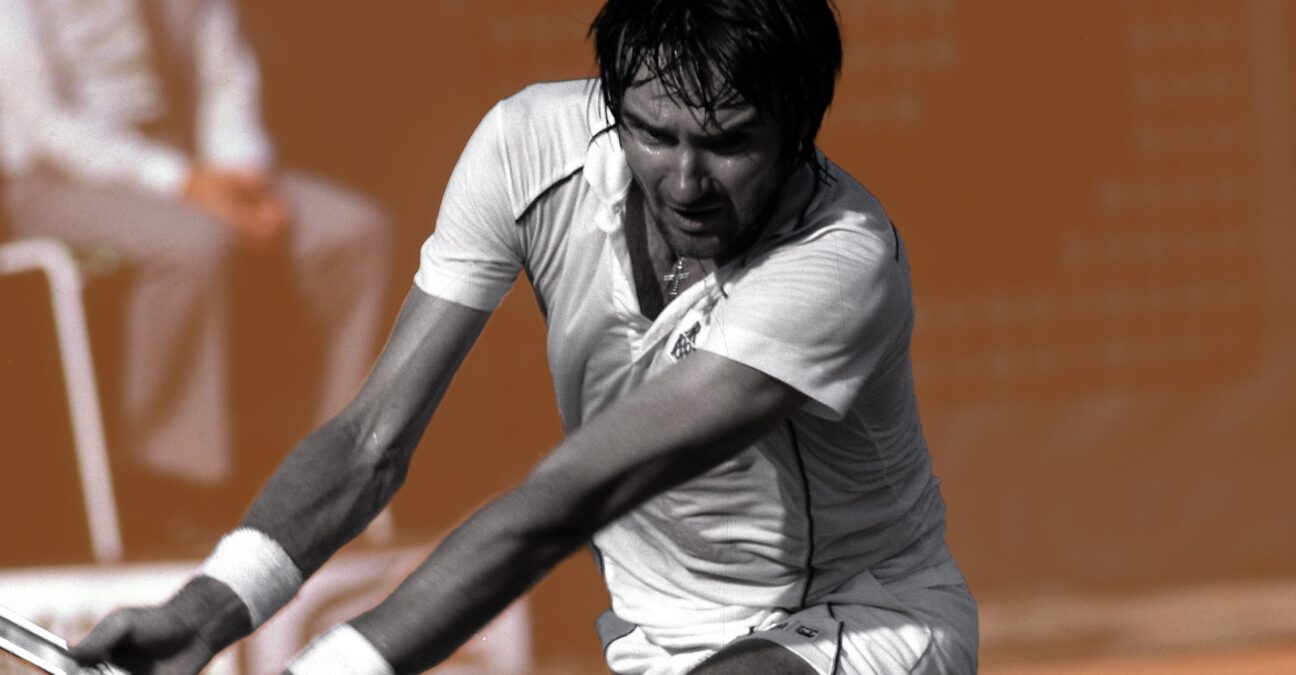 Jimmy Connors – On This Day 28/05
Jimmy Connors – On This Day 28/05
What happened on that day?
On this day, May 28, 1980, local player Jean-Francois Caujolle, ranked No 76 in the world, saw the French crowd turn against him after he blew a two-sets-to-love and 5-2 lead against world No 3 Jimmy Connors at Roland-Garros. The match remained a massive disappointment for Caujolle, who was vehemently booed by the public and eventually sent packing from the tournament, 3-6, 2-6, 7-5, 6-1, 6-1. The defeat also remained famous in tennis history as an example of how fickle the Parisian crowd could be, even against its own players.
The players: Jimmy Connors and Jean-Francois Caujolle
- Jimmy Connors: The five-time Grand Slam champ ranked No 3
Jimmy Connors, born in 1952, was one of the greatest tennis players of his generation. Coached by his mother Gloria, Connors was one of the first players to hit the ball flat off both wings, and mainly from the baseline. Making contact on the rise, and thus taking time away from his opponents, Connors’ game would be very influential for future generations of tennis players. “Jimbo” turned pro in 1972 and became world No 1 by 1974. In fact, that year he won all three Grand Slams that he entered; Connors was not allowed to play Roland-Garros due to an ongoing lawsuit against the ATP.
Despite the distraction, Connors dominated the sport during those years. He stayed at the top spot of the ATP Rankings for a record of 160 consecutive weeks, from 1974 to 1977. Connors lost his throne to Bjorn Borg on August 23, 1977, for just one week, but quickly reclaimed it for another 84 weeks, until the spring of 1979. During this period he won five Grand Slams titles: the Australian Open (1974), Wimbledon (1974) and the US Open (1974, 1976, 1978).
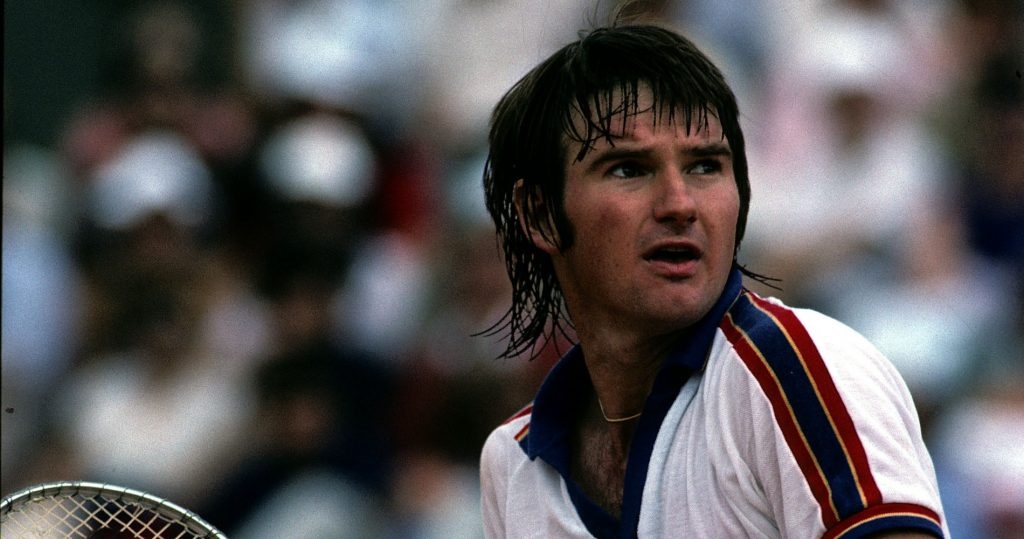
From 1979 until his appearance at Roland-Garros in 1980, Connors hadn’t performed as well as he had in his peak years. He had not reached a Grand Slam final since his 1978 US Open title, though he was still ranked No 3 in the world.
- Jean-Francois Caujolle: The top 100 player from France
Jean-Francois Caujolle, born in 1953 in Marseille, reached his best ranking of world No 59 in October 1977. His best results since the start of his career in 1970 were two final appearances, one reached in Copenhagen in 1976 (lost to Lars Evstrom, 6-4, 6-4), and the other in Gstaad in 1977 (lost to Jeff Borowiak, 2-6, 6-1, 6-3). A left-hander, Caujolle was known to be a passive player, not giving much pace, pushing his opponents to lose their patience. At Wimbledon in 1979, he had shown that his game could puzzle even the likes of Connors, who needed four sets to beat him (6-2, 6-7, 7-5, 6-3).
The place: Stade Roland-Garros
This story unfolded at Roland-Garros, Paris. The stadium, located in the west of Paris at the edge of the Bois de Boulogne forest, had been hosting the French Grand Slam since 1928. It was the first and now only Grand Slam to be played on clay, the slowest surface, which made it the hardest tournament to win from a physical perspective. In 1980, the first circular-shaped court in the world was introduced; first known as the “Central Bis”, or “the Bullring”, it remained as Court No 1 in tennis history.
1980 marked Caujolle’s ninth appearance at Roland-Garros, his best performance being a third round appearance in 1976 (defeated by Harold Solomon, 6-4, 6-3, 6-1). Connors had skipped the tournament five consecutive times before making a long-awaited comeback in 1979 where he reached the semi-final (beaten by Victor Pecci, 7-5, 6-4, 4-6, 6-3).
The facts: Caujolle held a match point in the third set but Connors fights back
Connors had not been a regular in Paris. After skipping the event for five years, the American had returned to Roland-Garros in 1979 to chase the only Grand Slam title missing from his resume. Although European clay was not his favourite surface, being a bit slow for the left-handed counter-puncher, Connors already had five Grand Slam titles to his name and he was in Paris to win the tournament. After falling in the semi-finals in 1979, he was back in 1980 with the same purpose and, somehow, his long absence had garnered him sympathy from the French public.
A few weeks before Roland-Garros, in early April, the two players had faced each other in the round of 16 in Monte-Carlo. It was Connors’ first appearance in Monaco, and Caujolle defeated the American 7-6, 6-2. Jimbo did not forget or forgive that.
In the meantime, the two left-handers had followed different paths. The Frenchman had continued his European clay-court tour, reaching the quarter-finals in Florence, and losing in the first round in Rome. In his first round at Roland-Garros, Caujolle edged Marcos Hocevar, 6-1, 6-4, 6-4.
Connors had flown back to the United States to attend the World Championship Tennis Finals in Dallas, where he defeated John McEnroe in the final (2-6, 7-6, 6-1, 6-2) on indoor carpet. In his first round in Paris, the American defeated the 1976 Roland-Garros champion Adriano Panatta (6-4, 4-6, 6-2, 7-6). His second opponent was another southpaw, the by-now familiar: Caujolle.
Connors had taken the Monte-Carlo loss as a personal offence. In a 2017 interview for L’Equipe, his opponent would recall that Jimbo abused him repeatedly at the changeovers. In this unfriendly atmosphere, the match started well for the Frenchman. Supported by the crowd, he used the same strategy that had paid dividends in Monte-Carlo, giving no pace and waiting for Connors to lose his focus. Soon, Caujolle claimed the first two sets while Jimbo was fooling around with the audience. About this time, there was a drastic change in the crowd: they put their uproarious energy behind Connors instead of the Frenchman!! Caujolle still took on a 5-2 lead in the third set and some journalists were already packing their notebooks to leave the court.
It was at this moment, with dozens of rowdy spectators openly cheering against him, that the French left-hander was overcome by the pressure of the occasion. He blew a match point at 5-2, 30-40, to the delight of the stirring spectators. Perhaps irritated by this missed opportunity as well as the public’s attitude, Caujolle turned everyone against him a few points later as he argued a call. Connors knew his time had come. He kept on fighting while Caujolle collapsed. The Frenchman would manage to win only two more games in the match.
What next? Connors reaches semis but Roland-Garros crown eludes him
Connors would reach the semi-final at Roland Garros that year, losing to Vitas Gerulaitis, 6-1, 3-6, 6-7, 6-2, 6-4. The American would finish his career with eight major titles, but would fail to triumph at Roland-Garros.
Caujolle would never really recover from the loss. A foot injury would rush his retirement from professional tennis in 1981. As a local player, he never fully understood the lack of support he received from the crowd on that fateful day. He would also not forgive Connors for his attitude.
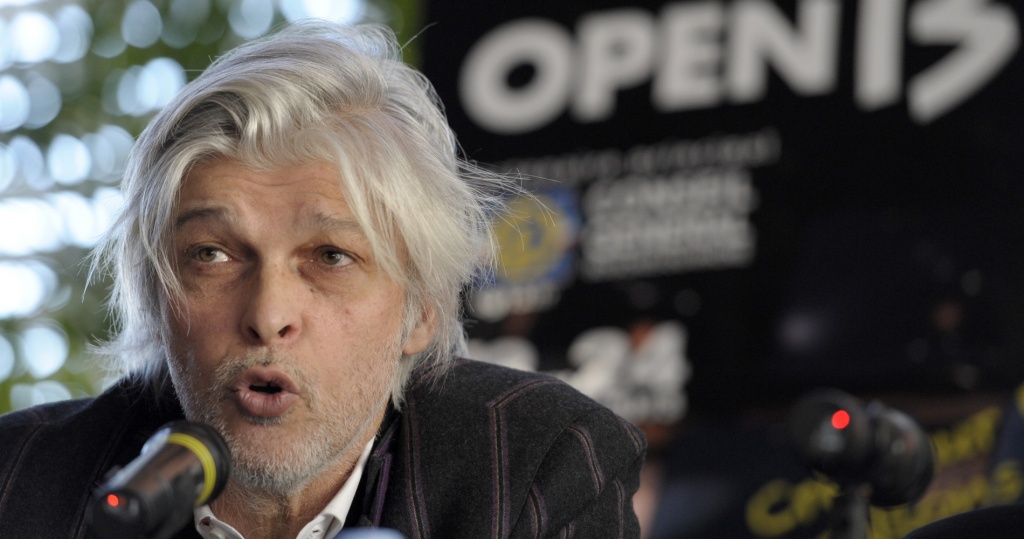
“He was a bully and a mean person,” he would claim, almost 30 years later.
After working as a representative for the tennis brand Major in the 1980s, Caujolle would create an ATP event in his hometown of Marseille, known as the Open 13. The tournament, founded in 1993, is successful to this day and has seen many great champions lift the trophy, including Boris Becker (in 1995) and Roger Federer (in 2003).
It would take Connors some time, but the Hall of Famer would manage to win Grand Slam tournaments and reclaim the world No 1 ranking again. Connors would claim three more Grand Slam titles: Wimbledon in 1982, and the US Open in 1982 and 1983. He would remain a top 10 player until April 1989 at the age of 37. The American finished his career with the all-time record of 109 ATP titles and finally retired at the end of 1992.
